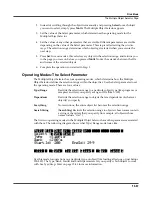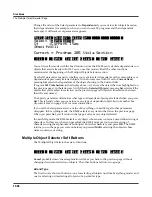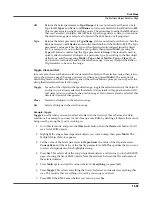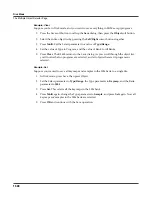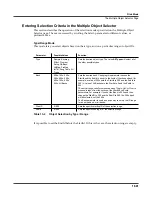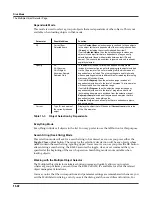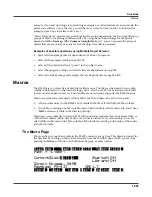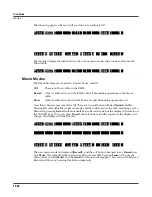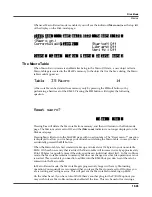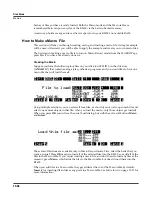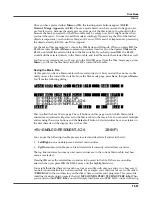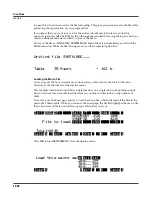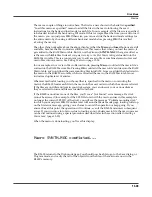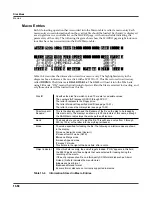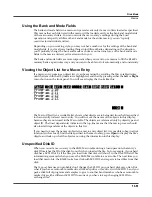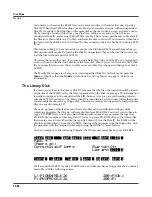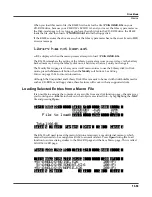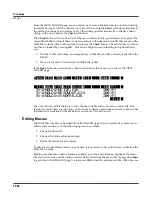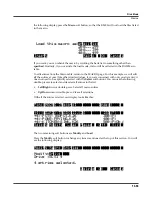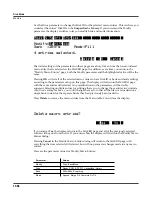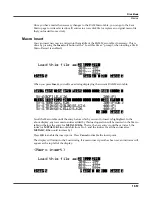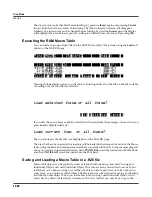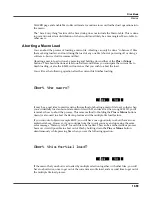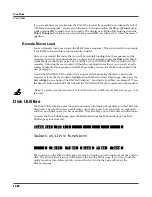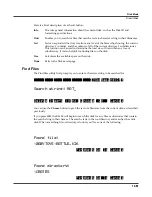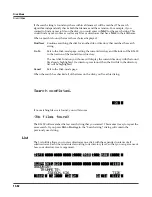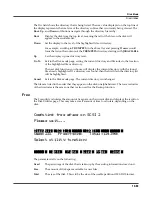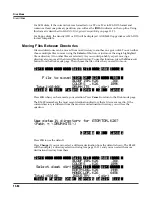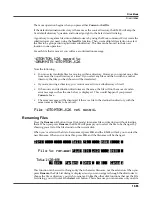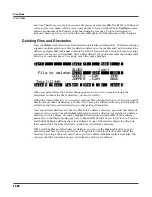
Disk Mode
Macros
13-51
Using the Bank and Mode Fields
The bank and mode Þelds in a macro entry are relevant only if a macro Þle is loaded as speciÞed.
This means that each Þle listed in the macro will be loaded exactly as the bank and mode Þelds
of the macro entry dictate. You can override the macro entryÕs settings during the Load
operation, and specify a different bank and mode for the entire macro (you canÕt specify
overrides for individual entries).
Depending on you working style, you may not have much use for the settings of the bank and
mode Þelds. If youÕre always loading things into different banks depending on the situation,
youÕll probably change the bank and mode each time you load anyway, so the bank and mode
Þelds in the macro entries wonÕt matter much to you.
The bank and mode Þelds are more important when you want to use macros to Þll the K2600Õs
memory banks a particular way, and you want to be able to do it automatically and consistently.
Viewing the Object List for a Macro Entry
If a macro entry contains an object list, it can be examined by scrolling the Macro table display
until the item with the Obj indicator is highlighted, and then by pressing either the
Left
or
Right
cursor button on the front panel. You will see a display that looks like this:
Macro|Object|List|||(load|dependents)|||
Program|210|||||||||||||||||||||||||||||
Program|211|||||||||||||||||||||||||||||
Program|212|||||||||||||||||||||||||||||
Program|213|||||||||||||||||||||||||||||
||||||||||||||||||||||||||||||||||||||||
|||||||||||||||||||||||||||||||||||
|||||
|||||||||||||||||||||||||||||||||||
||OK|
The Macro Object list, a scrollable list, shows what objects are to be loaded from the Þle speciÞed
in the currently indexed macro entry. You will not see the names of the objects in this display,
because they are not stored in the Macro table. The objects are referenced only by object type and
object ID. The (load dependents) indicator in the top line means that the macro process should
also load all dependents of the objects in this list.
If you need to know the names of objects in a macro entry object list, it is possible to begin a disk
function (such as Load), Þnd the Þle speciÞed in the macro entry, press
Open
to display the ÞleÕs
objects, and look up what the objects are, using the information in this display.
Unspecified Disk ID
When you record a macro entry to the RAM Macro table during a load operation, that entryÕs
disk ID matches the ID of the disk from which you loaded the Þle. So, for example, if your hard
disk has a SCSI ID of 5, all the Þles you load from that disk will show 5 in the Disk ID Þeld. This
information gets saved when you save the RAM Macro table to a macro Þle. The next time you
load that macro Þle, the K2600 looks for a disk with SCSI ID 5 and expects to load Þles from that
disk.
ThatÕs good, because you probably donÕt change the SCSI ID on your hard disk very often. But
what if you have a removable-media drive (like a Zip drive or Jaz drive) with SCSI ID 5, and you
pack a disk full of programs and samples to give to another band member who has a removable-
media drive with a different SCSI ID? Does one of you have to keep changing SCSI IDs to
exchange Þles?
Summary of Contents for K2600 BEST OF VAST - REV A
Page 76: ......

